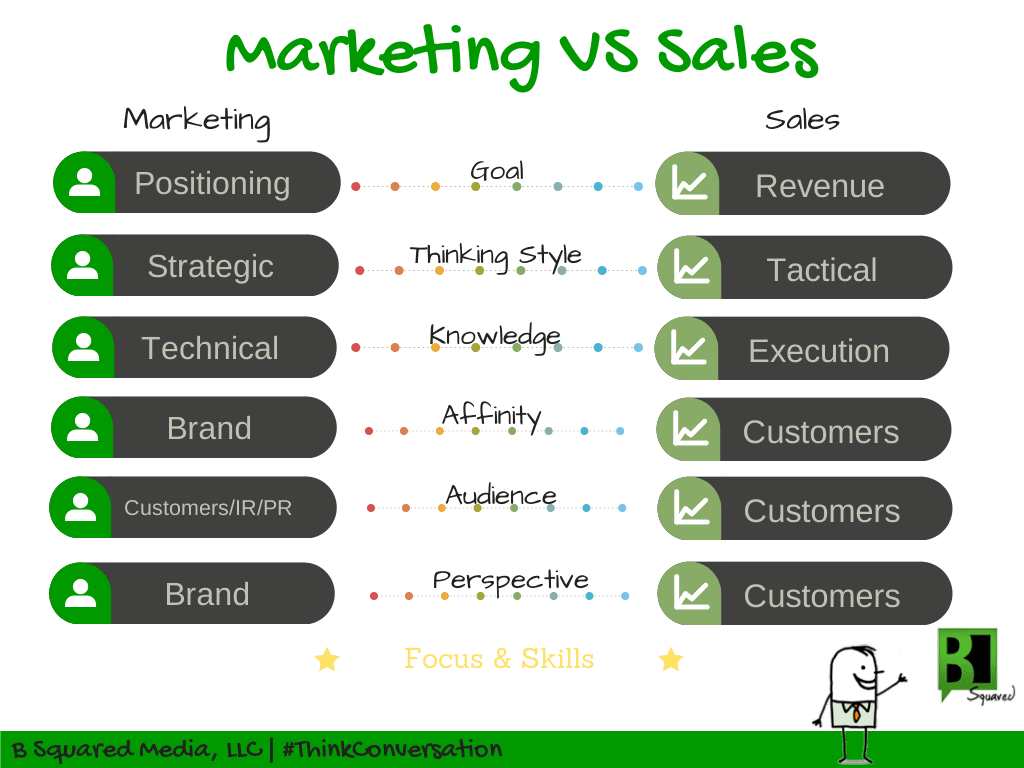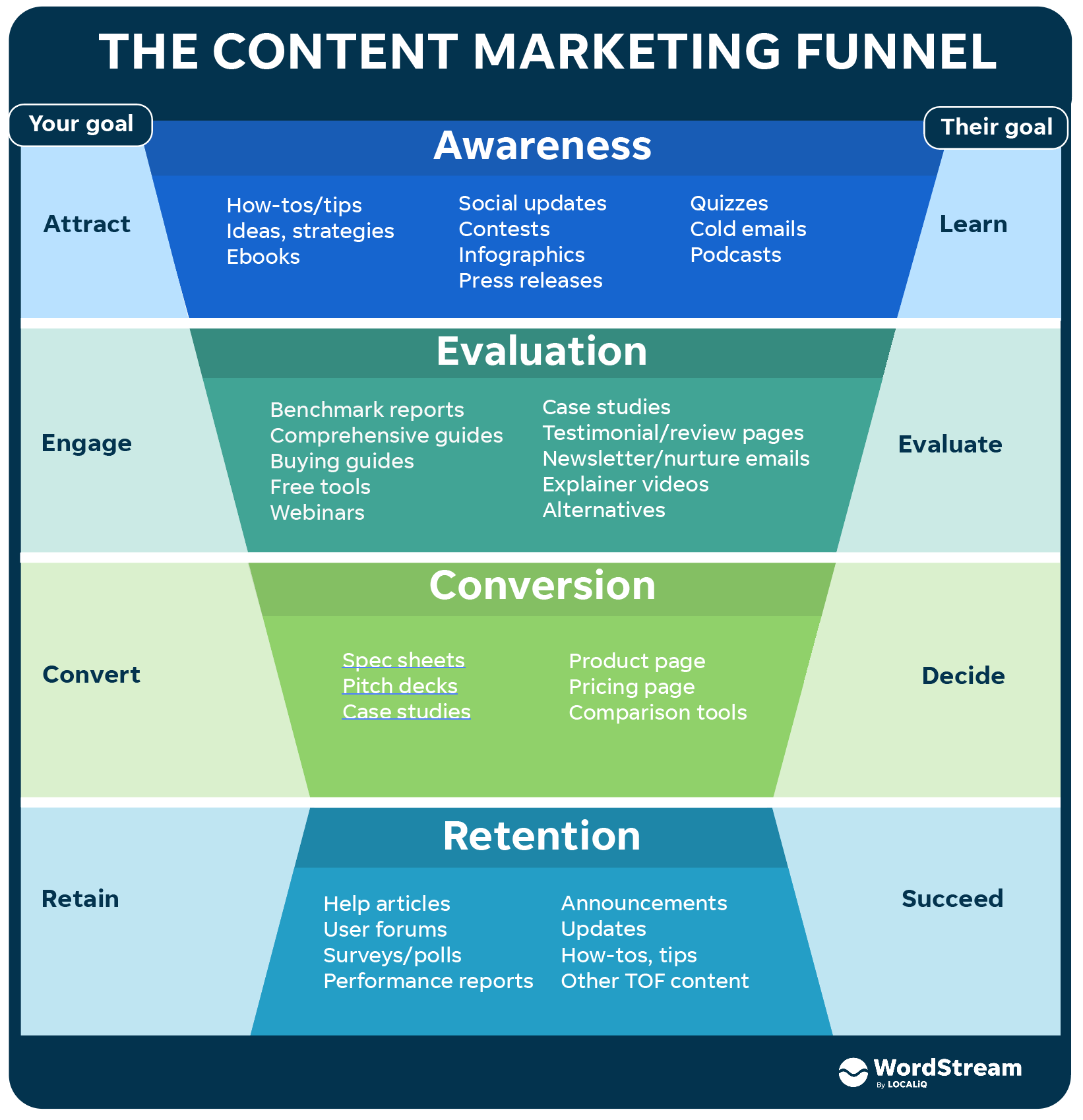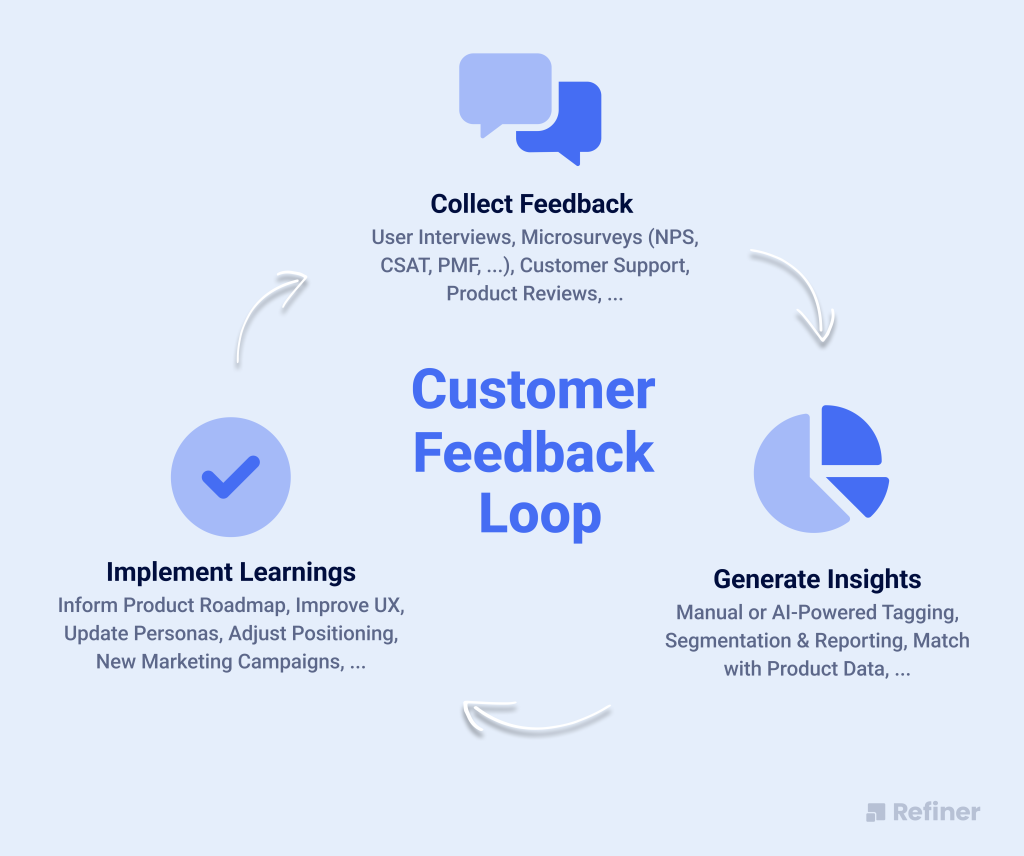Are your marketing and sales teams working in silos, missing out on critical opportunities for growth? If so, you’re not alone. Misalignment between these two crucial functions is a common pain point that can lead to lost revenue, customer dissatisfaction, and internal friction.
But what if you could transform this dynamic and turn it into a powerful engine for business growth? In this blog post, we’ll dive deep into strategies that will help you bridge the gap between marketing and sales. From setting shared goals to adopting cutting-edge technology, you’ll discover practical steps to create a unified team that works seamlessly together.
- Establish Shared Goals: Align marketing and sales by setting common objectives that both teams can work towards, ensuring everyone is moving in the same direction.
- Leverage Technology: Implement CRM and marketing automation tools to enhance collaboration and streamline communication between teams.
- Regular Cross-Departmental Meetings: Hold frequent meetings to discuss progress, address challenges, and ensure both teams are aligned on strategy and execution.
- Adopt a Unified Customer Journey Approach: Create a seamless experience for customers by ensuring that both marketing and sales are aligned at every stage of the customer journey.
- Monitor and Adjust: Continuously track the success of your alignment efforts and be ready to make adjustments as needed to maintain harmony between teams.
What Is Sales and Marketing Alignment?
Today’s customer has high expectations — from design and products to services and overall experience — and rightly so. They navigate a sea of options, meticulously weighing the pros and cons of each company before making a decision. For businesses, this discerning nature can be daunting, as control over external factors is limited.
This is where a robust marketing and sales alignment plan becomes essential.
In essence, marketing & sales alignment occurs when these two critical teams share common goals and collaborate to drive revenue. Despite their distinct roles, aligning marketing and sales around the same objectives ensures seamless communication, strategic guidance, and enhanced efficiency.

What are the key benefits of aligning marketing and sales teams?
- Better Equipped Sales Teams: When marketing and sales teams are truly aligned and in regular communication, sales reps are better prepared with the marketing materials they need to connect with leads effectively.
- Clearer Understanding of Your Customers: Alignment allows sales to provide regular feedback on the challenges and needs of leads. This feedback helps the marketing team refine buyer personas, leading to more targeted and effective marketing strategies.
- Improved Employee Engagement: Communication fosters a sense of being heard. Sales and marketing employees feel valued when their expertise is acknowledged, leading to higher engagement and job satisfaction.
- Less Frustration All Around: Consistent communication reduces misunderstandings, silos, and frustrations, creating a more harmonious working environment.
- More Sales and Faster Sales: Ultimately, a well-coordinated sales and marketing alignment strategy leads to increased sales efficiency. Aligned teams not only make more sales but also do so at a faster pace, highlighting the significant impact of a cohesive strategy.
Understanding these benefits sets the stage for defining the specific roles and responsibilities of sales and marketing within this alignment framework.
What Matters Most?
Establishing regular communication between marketing and sales teams is vital; clients often discover that consistent dialogue fosters collaboration and accountability towards shared goals. Fostering a culture of shared success by aligning metrics typically enhances teamwork, driving better overall performance. Additionally, encouraging sales teams to provide feedback on marketing content helps ensure relevance and boosts engagement, allowing both teams to adapt strategies based on real-world insights.Get In Touch
How do marketing and sales roles differ in an aligned organisation?
What Is Sales?
Sales encompasses activities aimed at persuading a prospect to purchase a product or service. Typically, a sales representative engages with prospects individually through email, phone, or face-to-face interactions.
To secure a positive response during the sales cycle, sales representatives often:
- Ask relevant questions to understand the prospect’s needs
- Address and overcome objections
- Schedule meetings, demos, and follow-ups
Sales professionals also play a critical role in upselling and cross-selling the company’s products and solutions to existing customers.
What Is Marketing?
Marketing involves strategies and processes designed to generate prospects for the sales team and customers for the business. Marketers work to expand the company’s reach, convert new leads into high-quality prospects, and drive demand for products or services. They also communicate updates and features to customers, both to promote and guide them.
The marketing department is pivotal in supporting sales by reaching a broad audience of potential customers. Key focuses for marketers include:
- Conducting market and audience research to understand target customers’ challenges and pain points
- Implementing lead generation strategies across various channels
- Building a long-term, recognisable brand to raise awareness
While both sales and marketing play vital roles in the business, their functions differ.
Source: Invoca
What Does Marketing Do for Sales?
In an organisation with strong marketing & sales alignment, marketing efforts engage buyers early in the buyer’s journey, preparing them for later interactions with sales. Post-purchase, marketing continues to provide value, reinforcing customer relationships.
To support sales, marketing departments must:
- Educate their buyer personas
- Nurture and qualify leads
- Provide competitive intelligence
- Offer content tailored to each stage of the sales funnel
- Influence market perception
- Consistently engage with customers
By fulfilling these roles, marketing ensures that buyers are well-informed, interested, and more likely to initiate or continue business relationships.

What Does Sales Do for Marketing?
The primary responsibility of sales is to close deals. However, sales also supports marketing by providing crucial insights from their direct interactions with customers. A well-aligned sales team closes the feedback loop by sharing:
- Real-world applications of solutions
- Insights on market dynamics
- Information on customer health
- Process efficiencies
- Content validity
This valuable feedback enables marketing to stay informed about buyer pain points and needs, thus enhancing their marketing strategies.

What strategies can improve sales and marketing alignment?
Mix Sales and Marketing Desks
Effective communication is challenging when sales and marketing teams are physically separated. By integrating their seating arrangements, marketers and sales reps gain insight into each other’s daily activities. This proximity allows sales reps to quickly ask marketers about lead-specific queries and enables marketers to receive immediate feedback on their campaigns. This simple adjustment fosters a collaborative environment, enhancing your overall marketing & sales alignment.
Focus on Adding Value to the Customer
The ultimate measure of success in any sales and marketing alignment plan is the revenue generated and the value delivered to customers. Sales teams often face intense pressure to meet short-term targets, while marketing may struggle to justify its contributions. True alignment transcends mere collaboration; it’s about positively impacting the customer experience. Both teams need a unified understanding of customer needs and behaviours. Remember, customers are individuals, not leads. Personalising campaigns, content, and sales strategies to address the specific needs at each stage of the buying cycle is crucial. For example, offering white papers and nurturing email sequences during the awareness phase is more effective than pushing a demo prematurely.
Create a Single Customer Journey
Achieving sales and marketing alignment strategies involves restructuring the entire customer journey to eliminate siloed experiences. Aim to create a seamless brand experience from the awareness stage to brand loyalty. This holistic approach allows your team to track prospects throughout the entire funnel. The primary challenge in creating a unified customer experience is obtaining a comprehensive view of the customer, which is where technology plays a vital role. Utilising CRM systems, email marketing tools, analytics, and marketing automation can significantly enhance sales alignment and marketing efforts.
Source: HubSpot
Use a “Marketing First” Approach
Sales and marketing misalignment often results in disjointed efforts, with marketing targeting one customer group and sales cold calling another. Prospects unfamiliar with your brand are less likely to respond positively to cold outreach, which can harm your reputation and reduce the chances of closing deals. Successful teams adopt a “marketing first” approach, where marketers identify potential customers with specific problems and demonstrate how these can be solved. This process involves warming up and nurturing leads by sharing valuable product information and highlighting benefits. Once leads are well-informed and ready to make a decision, the sales team reinforces the marketing message and closes the deal. This approach ensures cohesive and effective marketing alignment, leading to better outcomes.
Use Customer Feedback
One of the most potent strategies in your marketing and sales alignment plan is harnessing direct customer feedback, often referred to as Voice of Customer (VOC) data. This feedback is invaluable for refining your strategies and ensuring both teams are aligned with customer needs.
The optimal times to collect VOC feedback are through customer service interactions and during sales calls. These touchpoints provide a wealth of information about customers’ pain points and their motivations for purchasing your products or services.
You can utilise these insights to craft precise marketing messages and refine your product or service offerings. Furthermore, understanding what customers appreciate about your product can significantly enhance your marketing alignment. For instance, at SuperOffice, our sales teams surveyed over 800 prospects to determine their primary objectives with CRM software. The predominant feedback was a desire to “increase sales and improve customer loyalty.” Consequently, we updated our homepage copy to reflect this: “Increase sales, improve customer loyalty.” This simple change resulted in doubling our free trial sign-up requests, showcasing the power of customer feedback in aligning marketing and sales strategies.

Get Your Marketers on Sales Calls
Incorporating marketers into sales calls can dramatically improve the quality of your marketing content and enhance sales alignment. Christine, a marketing manager, added Nick, a marketer, to her sales team’s calls. This collaboration helped the sales team focus on the specific needs of prospects, in this case, those requiring a gifting solution like Alyce.
However, integrating marketers into sales calls can be challenging. Many sales teams may not immediately see the value. To bridge this gap, clearly outline the benefits for both teams. For example, marketers can share case studies and reference sheets, which the sales team can use as bottom-of-the-funnel content to close more deals. Demonstrating how this practice helps achieve mutual goals is a significant step in fostering marketing & sales alignment.
Schedule Regular Sales and Marketing Calls
Regular communication is crucial to preventing sales and marketing misalignment. Christina, a sales director, emphasises the importance of regular calls between sales and marketing teams to ensure ongoing alignment. Weekly or bi-weekly stand-ups facilitate regular course corrections and ensure that efforts remain productive.
Introducing new initiatives, such as regular meetings, can initially encounter resistance. Therefore, it’s essential to articulate the vision for these changes from the outset. Explain how regular meetings benefit both teams and offer incentives for participation, such as providing coffee, doughnuts, or conducting lunch meetings funded by the company. Consistent communication fosters relationship-building, idea-sharing, and informal conversations, all contributing to robust marketing & sales alignment.
Our Tactical Recommendations
Implementing account-based marketing strategies that involve both teams in targeting high-value accounts significantly enhances conversion rates. Training both marketing and sales teams on each other’s roles builds empathy and improves cooperation, leading to more effective alignment. Additionally, developing joint campaigns that incorporate input from both teams ensures that diverse perspectives are included, creating a more comprehensive approach to engaging potential customers.Get In Touch
Challenges When Aligning Sales and Marketing
Marketing-to-Sales Handoff
At first glance, the marketing-to-sales handoff appears straightforward: once a lead qualifies for sales (a sales-qualified lead, or SQL), marketing ensures the sales team is informed. However, this process is fraught with potential pitfalls.
The primary issues fall into two categories:
- Qualifying Criteria: The criteria for determining when a lead transitions from marketing-qualified (MQL) to sales-qualified (SQL) can be contentious. Are your MQL and SQL definitions clear and mutually agreed upon by both teams? How do you ensure these criteria are met consistently? Discrepancies in these definitions can lead to significant sales and marketing misalignment.
- Handoff Mechanisms: The method of transferring leads can also cause problems. Are leads automatically assigned once qualified, or do they have an owner pre-designation? How are sales reps notified—through tasks, emails, Slack notifications, or a combination? Inconsistent handoff processes can disrupt the sales alignment and affect overall efficiency.
Inconsistent Data
Data inconsistency often arises from having too many tools, weak processes for using technology, and lack of operational leadership. This inconsistency can severely impact decision-making processes that affect customers.
Poor data quality doesn’t just hinder accurate sales pipeline forecasting; it also affects campaign personalisation, correct lead segmentation, and appropriate prospect engagement. Reliable data is the lifeblood of revenue operations, crucial for marketing and sales alignment strategies. Marketing leaders, sales managers, and customer success teams all need accurate data to make informed decisions.
Solution to Inconsistent Data: Addressing disparate systems often resolves data issues. However, if problems persist, you need to refine your data collection processes. Start by interviewing your team to identify obstacles preventing accurate data entry. Ensure that the most critical data points are easily accessible and well-organised in your systems. This step is fundamental in creating a robust marketing and sales alignment plan.







